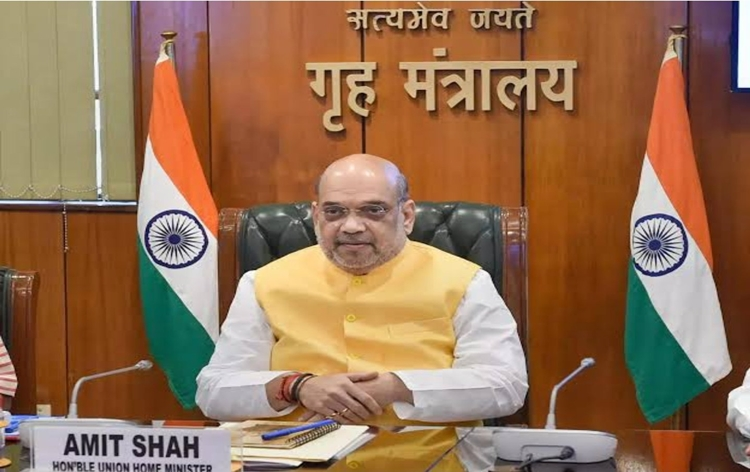
Disclaimer: Copyright infringement not intended.
Context
The release of funds under the State Disaster Response Fund (SDRF) by the Home Ministry.
Details
- Home Minister Amit Shah approves release of funds to 19 State governments.
- The funds will aid relief measures during the current Monsoon season.
Funds Allocation for 2022-23
- Chhattisgarh, Meghalaya, Telangana, and Uttar Pradesh to receive a total of ₹1,209 crore.
- Aimed at assisting these states in undertaking relief measures.
Funds Allocation for 2023-24
- Andhra Pradesh, Arunachal Pradesh, Assam, Bihar, Goa, Haryana, Himachal Pradesh, Kerala, Maharashtra, Manipur, Meghalaya, Odisha, Punjab, Tamil Nadu, and Tripura will receive a total of ₹4,984 crore.
- Intended to support relief measures during the specified year.
Funds Approved for Current Financial Year
- The Central Government has already approved over ₹3,600 crore for nine states.
- Allocated to aid relief measures during the ongoing financial year.
Allocation Based on 15th Finance Commission Recommendations
- The Central Government has allocated over ₹1,28,000 crore for SDRF.
- Allocation covers the period from 2021-22 to 2025-26.

About State Disaster Response Fund
- The State Disaster Response Fund (SDRF) is a fund established by the Indian government to assist states in managing and responding to various types of disasters.
- The SDRF aims to provide financial support for relief, response, and mitigation activities during natural or man-made disasters.
Purpose of SDRF
- The primary purpose of the SDRF is to support states in undertaking immediate relief measures in the wake of a disaster.
- The fund also helps in the capacity building of states to handle disasters effectively and efficiently.
- SDRF assists in providing timely financial assistance for rescue operations, relief distribution, medical care, and other emergency measures.
Funding Allocation
- The SDRF is funded through a combination of contributions from the central government and state governments.
- The central government allocates funds to each state based on the recommendations of the Finance Commission.
- The allocation is generally made on an annual basis and is subject to changes as per the government's decision.
Utilization of SDRF
- The SDRF can be utilized by states for various disaster-related activities, including but not limited to:
- a) Rescue and relief operations during natural disasters like floods, cyclones, earthquakes, etc.
- b) Emergency medical care and provision of essential supplies to affected populations.
- c) Restoration and repair of damaged infrastructure, including roads, bridges, and buildings.
- d) Rehabilitation and reconstruction activities post-disaster.
- e) Support for the functioning of state-level emergency response agencies.
- f) Capacity building and training programs for disaster management personnel.
Guidelines and Monitoring
- The utilization of SDRF funds is governed by specific guidelines issued by the central government.
- States are required to adhere to these guidelines and provide regular reports on fund utilization and progress of relief activities.
- The central government monitors the utilization of funds and provides necessary support and guidance to states when needed.
Periodic Review and Future Allocations
- The Finance Commission periodically reviews the allocation of funds to the SDRF based on the evolving needs and requirements.
- The allocation for the SDRF is generally made for a specific time period, covering multiple years to ensure continuity of funding for disaster response and mitigation efforts.
About National Disaster Response Fund
- The National Disaster Response Fund (NDRF) is a dedicated fund established by the Indian government to finance relief and rehabilitation efforts during major disasters.
- The NDRF aims to provide timely and effective financial assistance to states and union territories in the event of severe calamities.
Creation and Management
- The NDRF was created in accordance with the Disaster Management Act, 2005.
- It is managed by the National Disaster Management Authority (NDMA), which is responsible for overall policy, planning, and coordination of disaster management in the country.
Funding
- The NDRF is primarily funded by budgetary allocations from the central government.
- Additional sources of funding include voluntary contributions from individuals, organizations, and contributions from other countries or international organizations during exceptional circumstances.
Objective and Utilization of Funds
- The primary objective of the NDRF is to supplement the funds available with states and union territories to respond effectively to disasters.
- The funds from the NDRF are utilized for various purposes, including:
- a) Emergency response activities such as search and rescue operations, evacuation, and medical aid.
- b) Provision of immediate relief assistance to affected individuals and communities, including food, shelter, and medical support.
- c) Restoration and reconstruction of public infrastructure, including roads, bridges, schools, hospitals, etc.
- d) Capacity building initiatives to enhance disaster preparedness, response, and mitigation efforts.
Release of Funds
- The release of funds from the NDRF is based on the recommendation of the NDMA.
- Funds are allocated to states and union territories based on the severity and extent of the disaster, as assessed by the NDMA.
- The release of funds is subject to the approval of the Union Home Minister.
Monitoring and Accountability
- The utilization of funds from the NDRF is monitored by the NDMA and other designated authorities.
- States and union territories are required to submit utilization certificates and reports on the expenditure and progress of relief and rehabilitation activities.
- Audits and inspections may be conducted to ensure transparency, accountability, and proper utilization of funds.
Emergency Declarations
- In exceptional cases of severe disasters, the central government may declare a particular event as a "disaster of severe nature" and provide additional financial support from the NDRF.
- This declaration enables the central government to mobilize additional resources and support for the affected areas.
Long-term Planning and Preparedness
- The NDRF also supports the development and implementation of long-term disaster management plans and initiatives.
- This includes measures such as risk assessment, hazard mapping, public awareness campaigns, and training programs.
|
PRACTICE QUESTION
Q) Consider the following statements:
1. The State Disaster Response Fund is managed by the National Disaster Management Authority (NDMA).
2. The NDRF primarily relies on voluntary contributions from individuals and organizations for its funding.
Select the correct statements using the codes below:
(a) 1 only
(b) 2 only
(c) Both 1 and 2
(d) Neither 1 nor 2
Answer: D
|

https://newsonair.gov.in/News?title=HM-Amit-Shah-approves--release-of-over-six-thousand-194-crore-rupees-to-19-State-governments-under-State-Disaster-Response-Fund&id=463456




